The quick service restaurants (QSRs) market have expanded rapidly, thanks to the rapid urbanization, convenience of digital payments and cultural evolution. Here in UAE the fast food restaurants are very common and people often prefer dining out or ordering online than cooking. According to a report the QSRs (quick service restaurants) market stands at USD 5.25 Billion in 2024 and is expected to reach to a staggering USD 25.36 Billion by 2033.
The UAE is a business hub and tourist magnet, moreover Dubai, Abu Dhabi, Sharjah and other emirates are amongst the safest cities in the world. This is attracting business owners, investors, workers and tourists from all around the world, further contributing to the growth of QSR sector. According to a market study, 33% of UAE resident east fast food several times a week which trend is growing every year. The demand for quick and convenient food is rising day-by-day.
The quick service restaurants (QSRs) have witnessed a major shift towards digital ordering channels and a self-service payment kiosk has emerged as one of the most effective and impactful new channel to drive customer experience and efficiency at the restaurant. The self-service payment kiosks offer multi-lingual user interfaces, easy and quick payment methods, and menu customization.
Above all ordering at a self-service payment kiosk or food ordering kiosk is much quicker and usually doesn’t have long queues. Moreover businesses are also reporting a rise of up to 30% in average check size, after implementing these intuitive self-service payment kiosks or food-ordering kiosks. A self-service payment kiosk is a fully customizable solution which not only facilitate regular transactions but also offer great many features which help enhancing customer experience and empower management with analytical data.
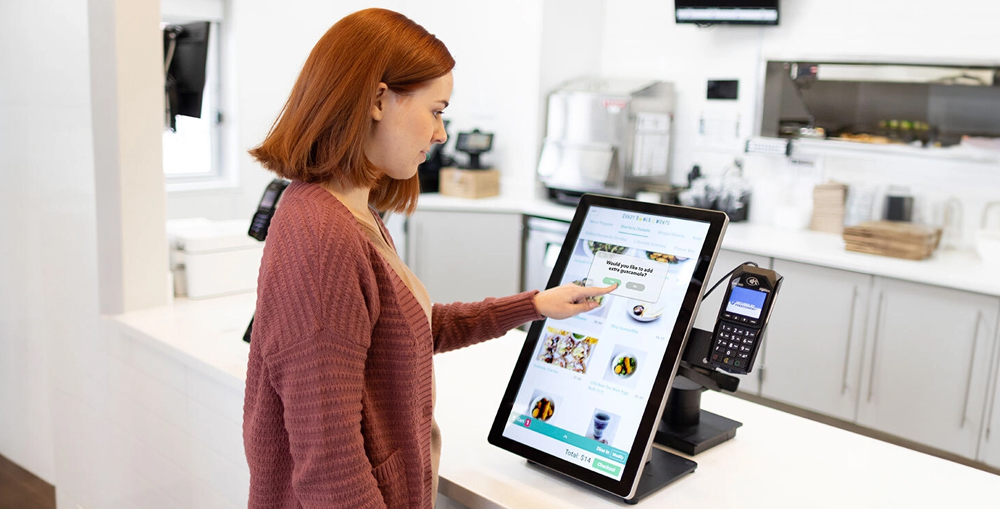
The Impact of Self-Service Payment Kiosks on QSRs (Quick Service Restaurants)
The Evolution of Food Ordering in Quick Service Restaurants (QSRs)
Ordering at a typical quick service restaurant was just by talking to cashier or through walk-through gates. However, this has changed after introduction of online food-ordering apps, digital channels, QR Code menus, and the self-service payment kiosk or a food-ordering kiosk. Over the last-decade, many international QSR brands such as McDonalds, KFC, Taco Bells, etc. have rapidly adopted to self-service payment kiosks across all their branches, around the world.
This trend also compelled other restaurants and fast food chains to deploy food-ordering kiosks at their branches. Today, customers just have to make a few taps on a touchscreen and swipe their cards, and that is it. Comparing this method to traditional cash counter orders, it is much quicker, more flexible, and it offers exceptional satisfaction. This digital interaction offer customers more freedom, control and personalization which add to their satisfaction.
Apart from better customer experience, businesses in QSR sector also witnessed a huge improvement in staff performance and efficient operations. Thanks for less human interaction, the orders can be placed in a fully autonomous way, freeing up the staff to focus on other customers and more productive tasks. Businesses can greatly level up their up-selling tactics through these interactive touchscreen interfaces and leverage several benefits to enhance customer experience and boost profitability.
Moreover in UAE where the population is more familiar with the convenience and comfort of digital channels, customers now expect digital interaction at their favorite quick service restaurant. In fact the food ordering has completely changed from talking to cashier to a few taps on a touchscreen through various digital channels and the self-service payment kiosks are at the heart of this evolution.
See Also: What are the Necessary Features of Food Ordering Kiosk?
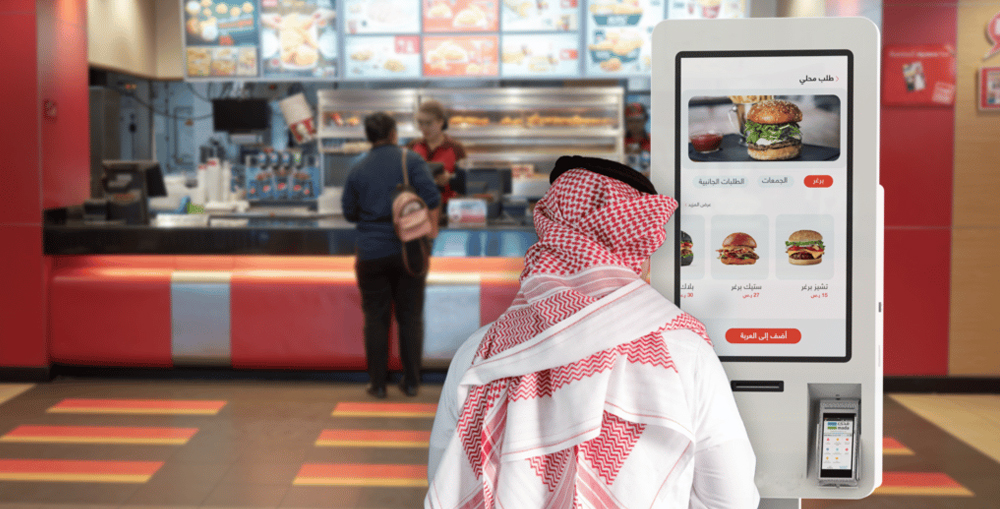
The Evolution of Food Ordering in Quick Service Restaurants (QSRs)
What is a Self-Service Payment Kiosk? And why they are Surging?
A self-service payment kiosk is a computer terminal equipped with interactive touchscreen, POS and payment methods, and a comprehensive software layer. The software application of a self-service payment kiosk has two component, one is the server-side application, the actual brain of the system and the other is the UIs or user interfaces, where the customers interact with the system.
The server-side software of a food ordering kiosk is integrated with payment gateways, POS, kitchen management tools, restaurant management system or any other core business application. Businesses can easily customized both software and hardware for their self-service payment kiosk to align it with their unique business needs. Multiple payment methods can be offered along with a multi-lingual user interface, ideal for a multi-cultural society like UAE.
There are tons of features and advantages of implementing a self-service payment kiosk or food ordering kiosk at a QSR. However, the human resource management, particularly the labor cost, and customer experience are the two major reasons why the demand is surging for these solutions. A self-service payment kiosk guide the customers via on-screen prompts and simplify ordering process, which eliminate the need of a staff.
Furthermore as customers are now distributed between self-service terminals and cash counters, thus the restaurant requires less cashiers. This also enable them to deploy more human resource on order preparation and other services to enhance customer experience. Another major factor that cause the surge of self-service payment kiosks is the customer demand. Customer used to of smartphones and online channels expect fast, personalized and quick service delivery.
See Also: What Is a Self-Service Payment Kiosk? Unveiling the Future of Transactions
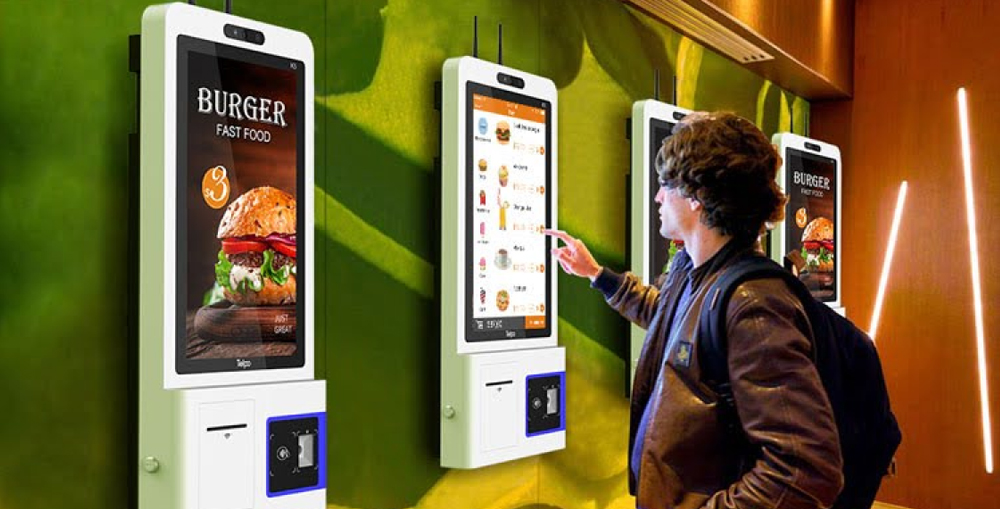
What is a Self-Service Payment Kiosk? And why they are Surging?
Self-Service Payment Kiosks Enhance Customer Experience
The self-service payment kiosks offer many advantages for both businesses and customers alike. The interactive self-service kiosks offer personalized User Interfaces or UIs, businesses can offer multiple languages, such as Arabic, English, Chinese, Russian, Urdu, Hindi, etc. and this can greatly improve user experience. Ordering in their own language will help them easily understand the ingredients, and customize their meals as per their preference.
Furthermore the self-service payment kiosks offer quicker and faster service delivery. The accuracy is flawless, as there is no human interaction involve, so no chance of misheard, or incorrect orders anymore. The customers can explore the full menu, they can chose different add-ons and utilize the payment method of their choice. The customers don’t have to wait in long queues, and they are served much quicker comparing to the traditional cashier–based ordering.
Apart from offering full control and freedom of order the interactive self-service payment kiosks also provide a detailed menu with detailed list of ingredients, photos and options to specify medical conditions or exclusion of certain ingredients. All this is relayed to the kitchen staff instantly with 100% accuracy. This level of personalization and accuracy delight your customers and build trust, which is crucial to reduce customer churn at quick service restaurants (QSRs).
The customers can spend more time, personalizing their order and exploring add-ons, without any peer-pressure. Moreover the self-service payment kiosks are very good at presenting special offers, deals, or promoting add-ons. Which also makes it easier for customers to select. The on-screen instructions and multi-lingual support greatly improve customer experience and help quick service restaurants (QSRs) in building good brand reputation.
See Also: Why Self Ordering Kiosks Are a Secret Weapon for Small Restaurants
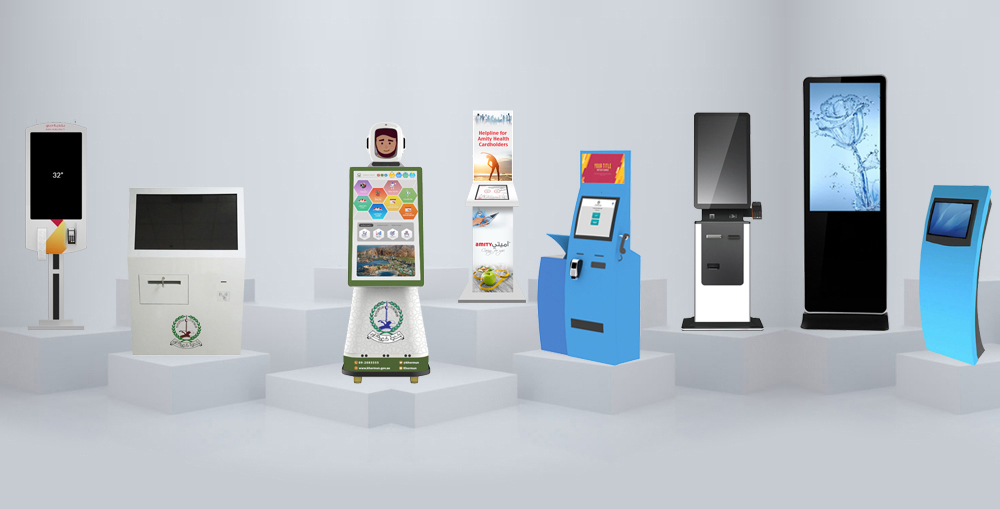
Self-Service Payment Kiosks Enhance Customer Experience
Self-Service Payment Kiosks Increase Sales and Average Check Size
Where the self-service payment kiosks enhance customer experience, they also increase the revenue. That is another reason why quick service restaurants (QSRs) are racing to adopt to these solutions. These food-ordering kiosks help restaurants generate more sales and effectively raise the average check size. Businesses can greatly improve their upselling techniques using these interactive self-service payment kiosks. It is much more appealing to see an add-on with a photo and description on a screen rather quickly asked by the cashier.
During the rush hours, the cashiers tend to pay less attentions on upselling, which is not the case with the food ordering kiosks. The self-service payment kiosks are powered by a smart software engine, who can suggest the most relevant add-ons automatically to the customers, and it can also customize content as per customer persona to improve sales and upselling.
The tempting images, catchy taglines and putting flashy offers is a great strategy to get customers’ attention. Businesses who are using self-service payment kiosks or food ordering kiosks have witnessed significant rise in average check size. For example, McDonalds reported an average 30% of increase in check size after deploying these kiosks. Moreover, according to studies, 20% of customers who don’t order a drink, would order it if it is offered by a kiosk.
Businesses can easily integrate their CRMs and other digital tools with self-service payment kiosks. This further increase the opportunities for more sales and enhance upselling. The intuitive UI help eliminating the friction form the ordering process which also make it easier for customers to explore more options and add-on, new products and items can surprise and influence buying decision, which results in higher average check size and more sales.
See Also: Analyzing the Impact of Payment Kiosks on Consumer Behavior
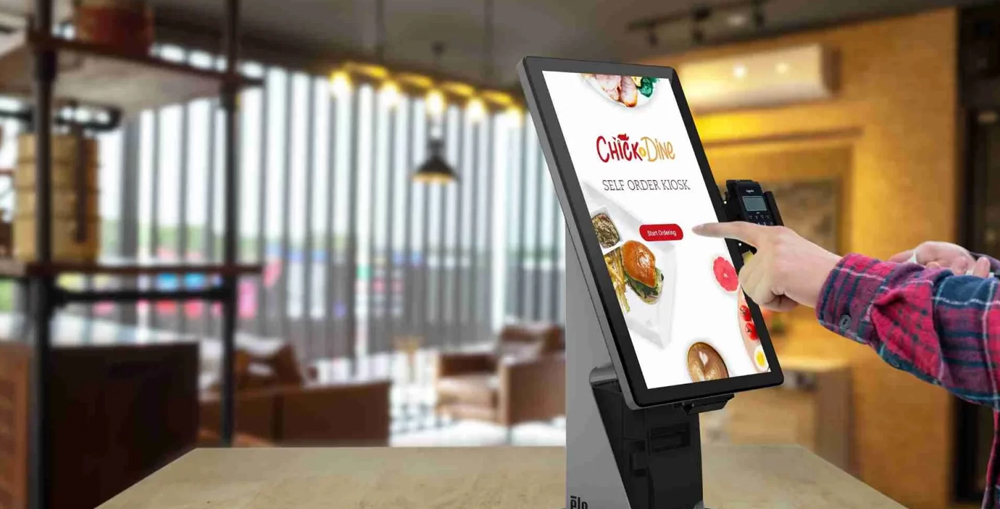
Self-Service Payment Kiosks Increase Sales and Average Check Size
Self-Service Payment Kiosks Improve Operations and Human Resource Efficiency
For most of the quick service restaurants the biggest challenge is the efficiency of the human resource. Especially when the footfall increases, the efficiency of the staff declines significantly. However, with the implementation of a customized self-service payment kiosks or food ordering kiosks businesses can do much more with their existing staff. When an alternate ordering channel is available, the footfall is distributed, resulting in balanced workload for the staff.
This can free up more human resource to focus on order preparation and serving customers’ other needs. Distributing customers between cash counters and self-service terminal can greatly improve efficiency during the rush hours. Multiple ordering channels allow businesses to serve more customers in parallel. Since the self-service operation doesn’t really require any staff assistance, businesses can allocate more resources on order preparation to cut service time.
Moreover the order customization is always problematic, sometime customers failed to explain clearly and some time the staff misheard them or the staff make errors in noting down their order. This makes order customization a very important pain point, and a self-service payment kiosk can effectively eliminate it from the process. The orders are displayed in front of customers for second review before sending to the kitchen, which prevent errors and increase accuracy.
Since the customer know what they want to order, ordering from the food ordering kiosk is much faster, moreover during the rush hours, the parallel lines move faster, effectively reducing the customer wait time. A study by Appetize shows, quick service restaurants (QSRs) witnessed a reduction of around 40% in total order time. The self-service payment kiosks never slow down, never get tired and offer seamless and smooth service consistency 24/7.
See Also: The Role of Self-Service Payment Kiosks in Reducing Operational Costs
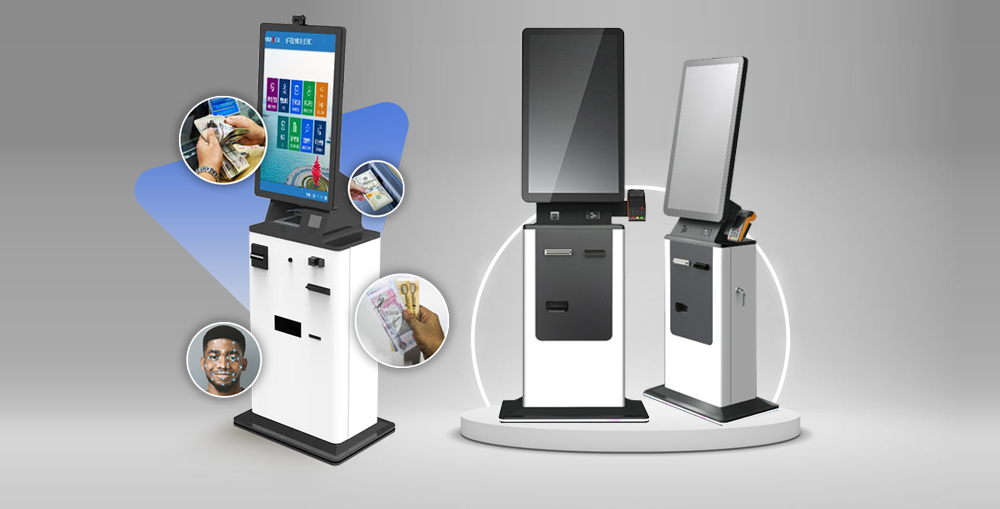
Self-Service Payment Kiosks Improve Operations and Human Resource Efficiency
Key Features of Self-Service Payment Kiosks and Implementation Best Practices
When it comes to acquiring a right self-service payment kiosk there are so many different types available in the market. Large businesses usually have technical teams to assess and evaluate every solution, however, for small or medium sized businesses the business owner or manager usually lack in-depth technical knowledge and understanding. Here are key features and implementation best practices which will help you understand a self-service payment kiosk solution:
Intuitive User Interfaces (UIs)
The touchscreen user interfaces or UIs are specially designed to make interactive kiosk more user-friendly. The screen should be clear, easy to understand, less options/ buttons, and appropriate sized fonts to ensure easy readability for the customer. It is ideal to use large buttons and photos along with proper instructions for each step. This will make your self-service payment kiosk more user-friendly and ensure even the first-time users can operate it without any difficulty. Multilingual UIs should be optimized for each language to avoid any error or wrong selection. The color scheme should be selected wisely to ensure high readability and contrast.
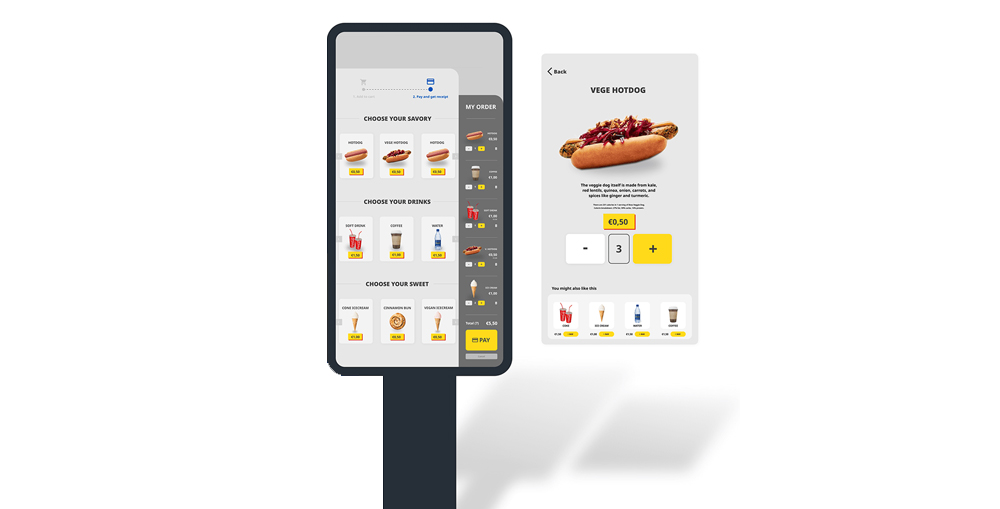
Interactive Kiosk Software: The User Interface
Personalized Upselling Prompts
The self-service payment kiosks comes with customized software application. Which can be customized as per your needs to enhance the customer experience. It comprises of a database of all of your offering and a smart AI algorithm which personalized the upselling prompts. For example, when a customer is customizing a burger, or ordering a standard burger, when they are done, the system can prompt them “Would you like to add fries? / Drink?” with a single-tap inclusion for better customer experience. Moreover the self-service payment kiosk never forgets to upsell or display your promotions, which greatly improve upselling and increase average check size.
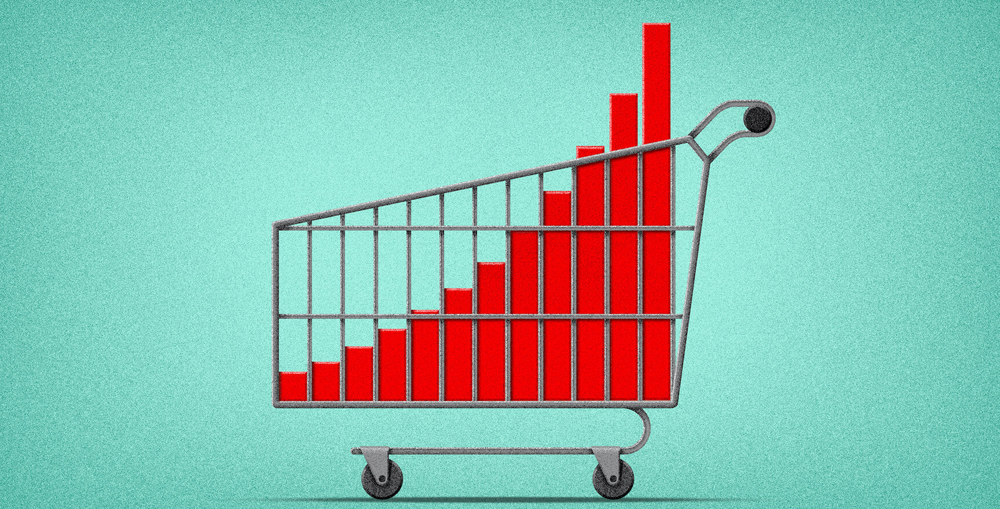
Improved Upselling and Increased Check Size
Multiple Payment Mode and Loyalty Program
The self-service payment kiosk should be able to offer multiple payment modes. For example, here in UAE people commonly use Credit/Debit cards, along with Apple Pay, Samsung Pay, etc. You should include all these payment methods to improve customer experience. Easy access to the loyalty program is a must to have feature. The customers should be provided ways to ear or use loyalty points. Adding QR Code scanner, enabling sign-in via mobile number or scanning special RFID enabled loyalty cards will help customers to quickly and conveniently access their loyalty points.
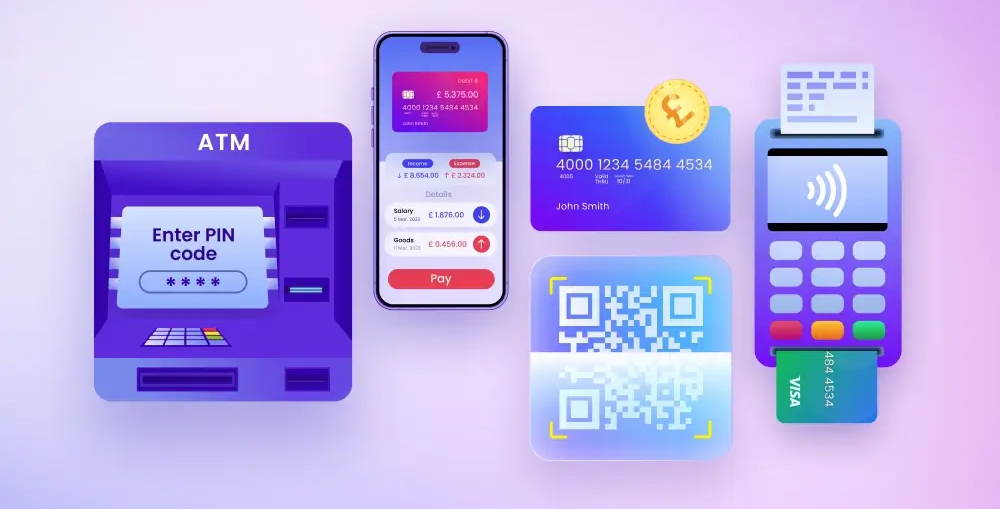
Select the Right Payment Hardware and Payment Mode
Order Alerts and Notifications
After ordering from a self-service payment kiosk, the customers can be provided with a printed receipt and instructions to go to the right counter to get their meal. Along with that, SMS or WhatsApp based alerts can be used for better customer experience. The self-service payment kiosk automatically send order confirmation, alerts and notifications directly through SMS or WhatsApp. Clear instructions, order confirmation and alerts can greatly improve customer experience and also provide business a chance to utilize these channels to collect feedback and make your food ordering kiosk an ultimate customer experience transformation tool.

Automatic Alerts and Notification
Third-Party Software Integration
One of the most important aspect of a self-service payment kiosk implementation is its ability and flexibility towards third-party system integration. Along with its many useful features, the integration is the most crucial for operational efficiency. As this integration allow your food ordering kiosk to communicate with other existing solutions such as loyalty program, POS, CRM, kitchen management system, payment gateways, etc. This integration ensures everyone is getting real-time updates. The orders can be instantly pushed to kitchen staff and cashiers. The payments can be registered instantly, the loyalty points can be used in real-time and the feedback can be stored in CMS seamlessly.

Integration with other Software, Hardware, and Enterprise Solutions
Scalability and Update
On an average a self-service payment kiosk can operate for many years, helping businesses in enhancing customer experience and catering to their emerging needs. However, they require regular service checks and occasional maintenance as well. Hence it is important to sign maintenance services as well. The self-service payment kiosk software should be able to add more kiosk in future and have ability to expand to other branches without requiring independent IT infrastructure to minimize the cost. Moreover the self-service payment kiosks should be able to offer customization, updates, upgrades and changes in future to accommodate the emerging needs and requirements at a low cost.

Scalability, Upgrade and Future Readiness
All these are important features and should be considered while designing or acquiring your self-service payment kiosk or food ordering kiosk. It is better to engage a professional kiosk designing company, such as RSI Geeks to ensure a well-crafted and tailored solution for your exclusive business needs. A self-service payment kiosk needs both physical space and prominent location within your premises. Mostly quick service restaurants (QSRs) have limited space, hence the kiosk should be placed strategically which ensures visibility and enough room for at least 5-6 customer to stand in queue in front of the kiosk.
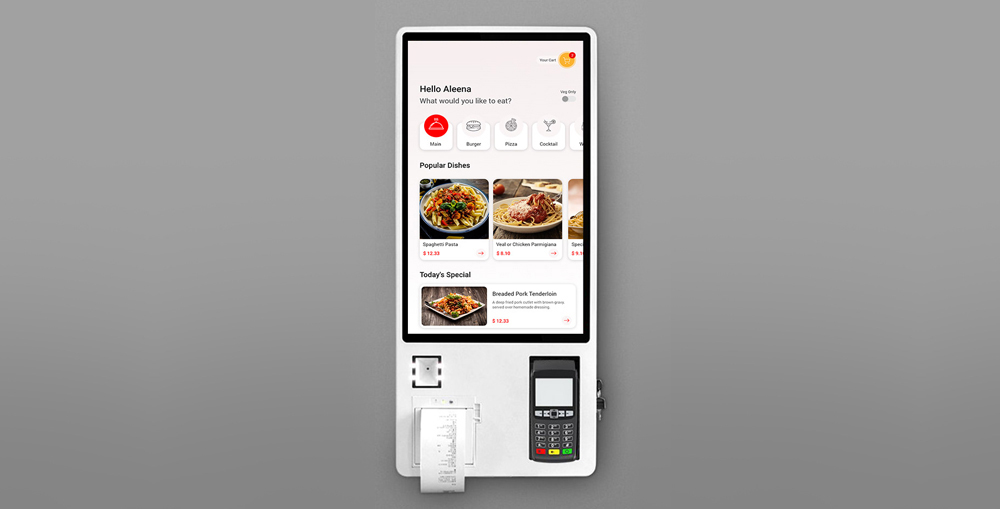
Key Features of Self-Service Payment Kiosks and Implementation Best Practices
See Also: Integrating AI in Payment Kiosks for Enhanced User Experience
Conclusion
Self-service payment kiosks or food ordering kiosks have proven to be a game-changer in the quick service restaurant (QSRs) industry. Businesses all around the world are rushing to adopt this innovative technology to enhance and elevate their operations. The quick service restaurant (QSR) industry in UAE is rapidly growing and is expected to grow in coming decade. Thanks to flexible government policies, the tourists and expats are pouring in, in millions every year.
The average lifestyle in UAE is busy and almost around one third of the population regularly order food from quick service restaurants (QSRs). Most of the customers prefer the control, convenience and quick service through interactive food ordering kiosks. Which makes them ideal for businesses who are seeking ways to improve customer experience and streamline internal processes for more sales and profitability.
For business owners and managers the bottom-line is crystal clear. The self-service payment kiosks elevate customer experience, automate upselling, facilitate product promotion campaigns, streamline internal processes and greatly improve staff efficiency. In a highly competitive market landscape, a customized food ordering kiosk is a match-in-heavens for quick service restaurants (QSRs).
Where these kiosks increase average check size and improve sales, they are also excellent at labor cost cutting. This doesn’t mean a kiosk is a replacement of cashier, but usually businesses require very less staff to effectively operate multiple kiosks. In this blog we have discussed the key benefits of implementing a self-service payment kiosk. If you want to learn more or if you want our help to design a bespoke food ordering kiosk for your restaurant, please feel free to contact us through our Contact Us page or leave a comment below.
See Also: Adopting Self-Service Payment Kiosks for Government Services
